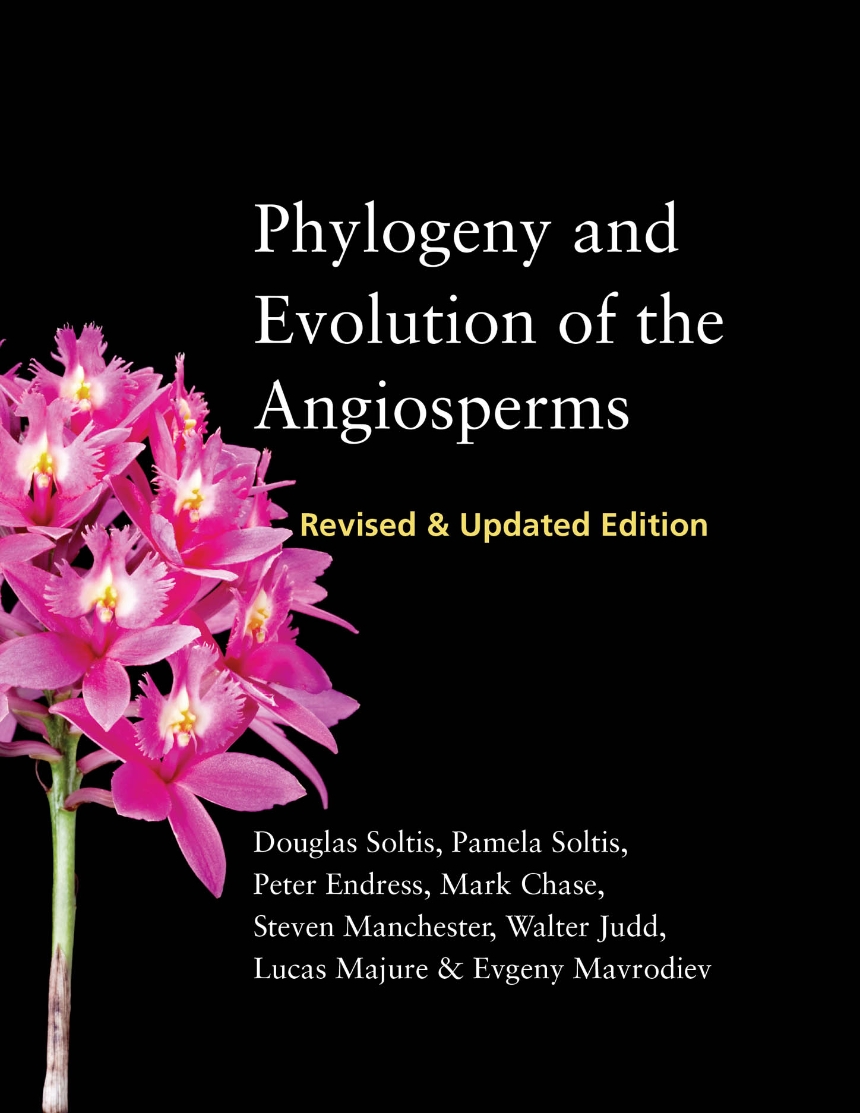Phylogeny and Evolution of the Angiosperms
Revised and Updated Edition
Second Edition, Revised
9780226383613
9780226441757
Phylogeny and Evolution of the Angiosperms
Revised and Updated Edition
Second Edition, Revised
Although they are relative latecomers on the evolutionary scene, having emerged only 135‒170 million years ago, angiosperms—or flowering plants—are the most diverse and species-rich group of seed-producing land plants, comprising more than 15,000 genera and over 350,000 species. Not only are they a model group for studying the patterns and processes of evolutionary diversification, they also play major roles in our economy, diet, and courtship rituals, producing our fruits, legumes, and grains, not to mention the flowers in our Valentine’s bouquets. They are also crucial ecologically, dominating most terrestrial and some aquatic landscapes.
This fully revised edition of Phylogeny and Evolution of the Angiosperms provides an up-to-date, comprehensive overview of the evolution of and relationships among these vital plants. Incorporating molecular phylogenetics with morphological, chemical, developmental, and paleobotanical data, as well as presenting a more detailed account of early angiosperm fossils and important fossil information for each evolutionary branch of the angiosperms, the new edition integrates fossil evidence into a robust phylogenetic framework. Featuring a wealth of new color images, this highly synthetic work further reevaluates long-held evolutionary hypotheses related to flowering plants and will be an essential reference for botanists, plant systematists, and evolutionary biologists alike.
This fully revised edition of Phylogeny and Evolution of the Angiosperms provides an up-to-date, comprehensive overview of the evolution of and relationships among these vital plants. Incorporating molecular phylogenetics with morphological, chemical, developmental, and paleobotanical data, as well as presenting a more detailed account of early angiosperm fossils and important fossil information for each evolutionary branch of the angiosperms, the new edition integrates fossil evidence into a robust phylogenetic framework. Featuring a wealth of new color images, this highly synthetic work further reevaluates long-held evolutionary hypotheses related to flowering plants and will be an essential reference for botanists, plant systematists, and evolutionary biologists alike.
See the supplementary tables and images for the book.
Download the first chapter (PDF format).
See a website for the book.
Download the first chapter (PDF format).
See a website for the book.
590 pages | 60 color plates, 36 halftones, 129 line drawings, 18 tables | 8 1/2 x 11 | © 2018
Biological Sciences: Biology--Systematics, Botany, Evolutionary Biology, Microbiology
Reviews
Table of Contents
Chapter 1. Relationships of Angiosperms to Other Seed Plants
Chapter 2. The Age and Diversity of Early Angiosperms: Integration of the Fossil Record and Molecular Dates
Chapter 3. Phylogeny of Angiosperms: An Overview
Chapter 4. The ANA Grade
Chapter 5. Magnoliids and Chloranthales
Chapter 6. Character Evolution: The Ancestral Angiosperm and General Trends
Chapter 7. Monocots
Chapter 8. Eudicots (+ Ceratophyllaceae): Introduction and Early-Diverging Lineages
Chapter 9. Core Eudicots: Introduction, Gunnerales, and Dilleniales
Chapter 10. Superrosids
Chapter 11. Superasterids
Chapter 12. Angiosperm Classification
Chapter 13. Parallel and Convergent Evolution
Chapter 14. Floral Diversification
Chapter 15. The Evolution of Genome Size
Chapter 16. Polyploidy
Descriptions of Major Clades
Acknowledgments
Reference List
Index
Chapter 2. The Age and Diversity of Early Angiosperms: Integration of the Fossil Record and Molecular Dates
Chapter 3. Phylogeny of Angiosperms: An Overview
Chapter 4. The ANA Grade
Chapter 5. Magnoliids and Chloranthales
Chapter 6. Character Evolution: The Ancestral Angiosperm and General Trends
Chapter 7. Monocots
Chapter 8. Eudicots (+ Ceratophyllaceae): Introduction and Early-Diverging Lineages
Chapter 9. Core Eudicots: Introduction, Gunnerales, and Dilleniales
Chapter 10. Superrosids
Chapter 11. Superasterids
Chapter 12. Angiosperm Classification
Chapter 13. Parallel and Convergent Evolution
Chapter 14. Floral Diversification
Chapter 15. The Evolution of Genome Size
Chapter 16. Polyploidy
Descriptions of Major Clades
Acknowledgments
Reference List
Index
